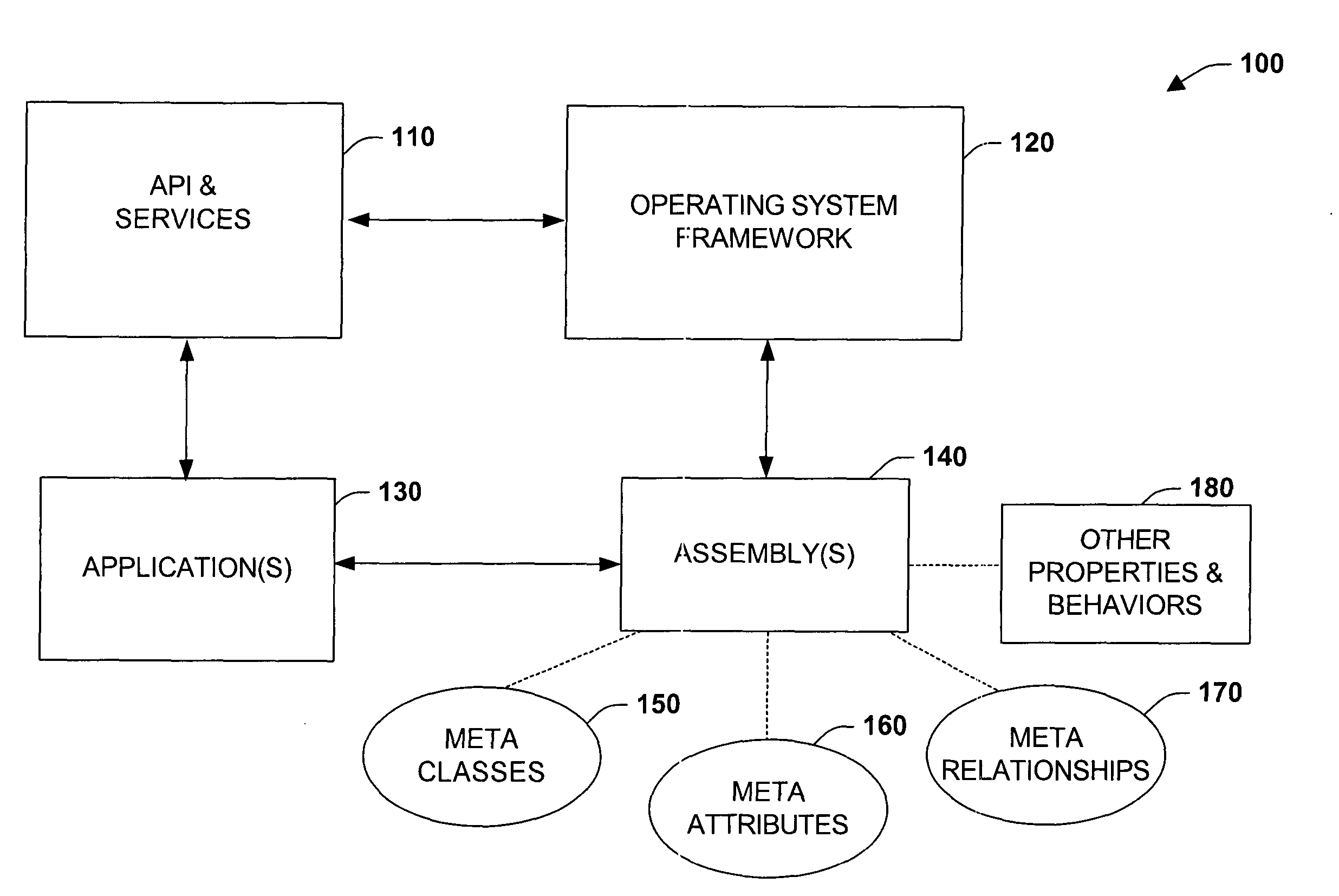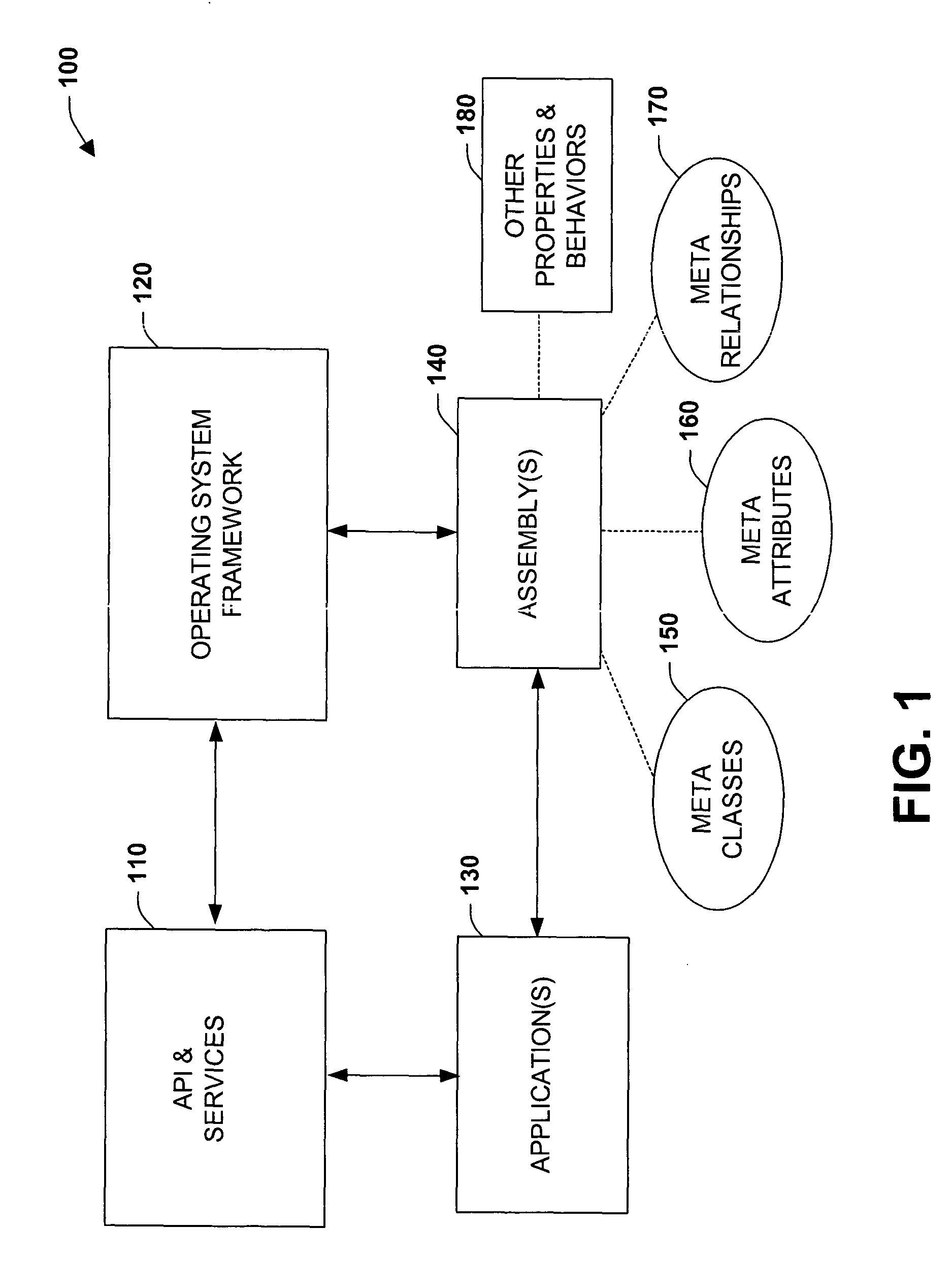Exstensibility application programming interface and framework for meta-model objects
a programming interface and object technology, applied in the computer system field, can solve the problems of complex code required for maintaining the internal document structure of simple changes to applications or items, and the minimum object-oriented model is problematic, so as to facilitate application development, simplify program development and operating system interactions, and reduce the effort required to build
- Summary
- Abstract
- Description
- Claims
- Application Information
AI Technical Summary
Benefits of technology
Problems solved by technology
Method used
Image
Examples
Embodiment Construction
The present invention relates to a system and methodology providing an Application Programming Interface (API) and framework that supports a meta-model object for application design and operating system interactions. In one aspect of the present invention, an API is provided having an input component that receives data and / or instructions. The input component processes a meta-data model that interrelates data via a class hierarchy, wherein the class hierarchy includes relationship descriptions between class objects, attributes, rules, and / or behavioral descriptions. Another aspect includes a data management system or engine that includes a component to receive an item having meta-data annotations. An analysis component determines at runtime a structure for the item via deployment of the meta-data annotation. The system can also include a framework component that defines meta-data class derivations, meta-data classes, meta-data integrity rules, and / or meta-data class behavior.
As u...
PUM
 Login to View More
Login to View More Abstract
Description
Claims
Application Information
 Login to View More
Login to View More - R&D
- Intellectual Property
- Life Sciences
- Materials
- Tech Scout
- Unparalleled Data Quality
- Higher Quality Content
- 60% Fewer Hallucinations
Browse by: Latest US Patents, China's latest patents, Technical Efficacy Thesaurus, Application Domain, Technology Topic, Popular Technical Reports.
© 2025 PatSnap. All rights reserved.Legal|Privacy policy|Modern Slavery Act Transparency Statement|Sitemap|About US| Contact US: help@patsnap.com



